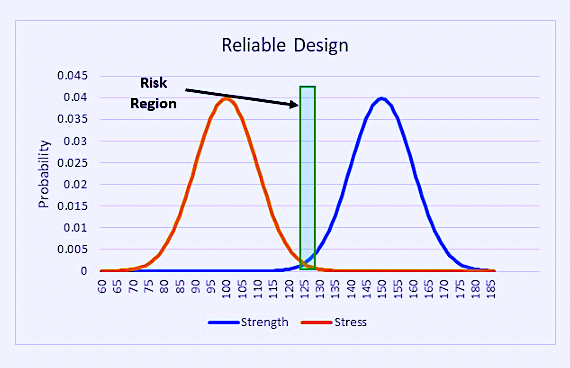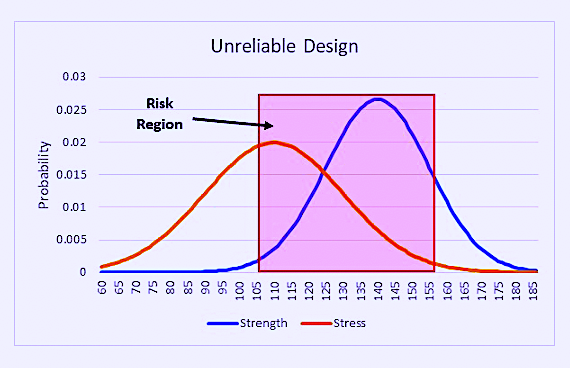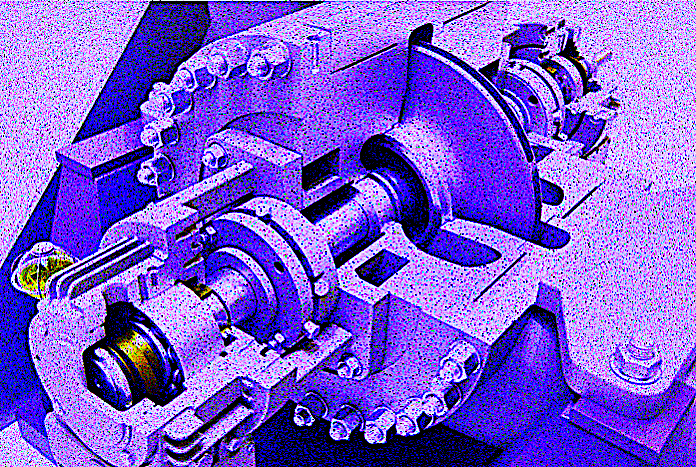Executing precision maintenance work requires a combination of skills, effective work instructions and methods, correct and properly calibrated tools, and, of course, the right parts that are in the right condition. Yet, when conducting failure investigations and root-cause analysis (RCA), parts are always on the list of usual suspects.
Were the parts properly selected and specified at the time that the machine was designed? Were the correct replacement parts purchased from quality suppliers? Were the parts correctly defined in the bill of materials (BOM) in the maintenance plan? Were the correct parts and materials pulled when kitting the job? Were the parts stored and picked correctly to avoid shelf degradation? This week’s article focuses on the design aspects of parts quality.
DESIGN = THE DNA OF MACHINES
Design represents the genetic code or “DNA” of any electromechanical machine. For humans, DNA plays a huge role in determining one’s susceptibility to illness and disease. If your parents and/or grandparents suffered from cancer, heart disease, or other affliction, you’re at greater risk for those maladies and must manage your lifestyle and medical care accordingly. When designing equipment, we must consider static loads, dynamic loads, load excursions, and environmental conditions to which the equipment and its various parts will be subjected.
Static loads refer to the forces when the machine is in a stationary condition and are relatively easy to calculate. Dynamic loads refer to the forces when the machine is rotating, reciprocating or otherwise moving. Load excursions occur when unforeseen static or dynamic forces are applied. Reliability engineers refer to this analysis as stress vs. strength interference.
UNDERSTANDING STRESS VS. STRENGTH INTERFERENCE: RELIABLE DESIGN
Strength of design, which refers to the strength of the materials and design as a whole, is usually represented as a bell curve to account for predicted variation in material strength. Stress refers to static and dynamic loads that are expected. It, too, is represented as a bell curve to reflect expected variations in stress, including anticipated excursions. Interference is where the tails of the two bell curves overlap.
Keeping the math simple and in generic units, if the material strength has an expected value of 150, with a standard deviation of 10, we could reasonably expect that in 99% of cases, the strength of the material will exceed 126.74, which is the average minus 2.3263 standard deviations. Likewise, if the stress on the machine is 100. with a standard deviation of 10, we expect that in 99% of cases, the applied stress will be less than 123.26, which is the average plus 2.3263. Because the maximum applied stress of 123.26 is less than the minimum design strength of 126.74, we have no interference, and can assume a reliable design (Fig. 1).

Fig. 1. In a reliable design at the 99%-confidence level, there is no overlap between
the bell curves for the applied stress and the material strength, so there is no interference.
UNDERSTANDING STRESS VS. STRENGTH INTERFERENCE: UNRELIABLE DESIGN
What happens, though, if our supply chain chooses to buy parts from an less-than-reputable source that lowers the average material strength from 150 to 140 and increases the standard deviation from 10 to 15. Now, we expect the material strength to exceed 105.11 at the 99%-confidence level, down significantly from the design value of 126.74. Additionally, what if our operators push the equipment a bit too hard, which increases the average stress to 110, and we have some unexpected, but transient load excursion that doubles the standard deviation from 10 to 20. Now, we have a maximum expected load of 156.53. Under this scenario, there is a huge opportunity for the applied stress to exceed the material strength of the asset; there is a substantial stress vs. strength interference; and we can expect reliability to suffer. The increased standard deviation values flatten the curve and widen the distribution of expected stress and material strength (Fig. 2).

Fig. 2. In an unreliable design, the tails of the two bell curves for the applied stress
and material strength overlap and interfere significantly at the 99%-confidence level mark.
THE BOTTOM LINE
Equipment and process reliability requires precision in the form of materials selection, material-quality management, and installation. Design represents the DNA of a machine and determines the inherent maximum reliability the asset can achieve, regardless of how good we are at maintenance.
Understanding the static and dynamic loads that can be expected in an application as well as likely excursions defines the probability distribution of applied stresses. Evaluating the strength and expected variation defines the probability distribution for design strength. Evaluating the probability that the applied stress curve will interfere with the material strength curve is an essential first step in our quest for precision and asset reliability. Once parts and materials are properly selected, they must be shipped, stored and staged to prevent damage and shelf degradation. That will be the focus in Part II of this article for next week’s The RAM Review.TRR
ABOUT THE AUTHOR
Drew Troyer has over 30 years of experience in the RAM arena. Currently a Principal with T.A. Cook Consultants, he was a Co-founder and former CEO of Noria Corporation. A trusted advisor to a global blue chip client base, this industry veteran has authored or co-authored more than 250 books, chapters, course books, articles, and technical papers and is popular keynote and technical speaker at conferences around the world. Drew is a Certified Reliability Engineer (CRE), Certified Maintenance & Reliability Professional (CMRP), holds B.S. and M.B.A. degrees, and is Master’s degree candidate in Environmental Sustainability at Harvard University. Contact him directly at 512-800-6031 or dtroyer@theramreview.com.
Tags: reliability, availability, maintenance, RAM, precision maintenance, supply chain, fasteners, lubrication, alignment, balance, FLAB, vibration, machine design, spare parts, parts management



